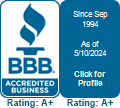Moving When It’s Hot: 6 Best Practices
Summer and warmer weather affect our lifestyle in several ways. We wear less clothes, we need to drink more water and we send our kids outside more often than ever. We also handle things differently when it comes to moving homes.
If you’re relocating during the summer (or another time when temperatures tend to be elevated), there are certain things to know and mistakes to avoid. Let’s go over six best practices for moving when it’s hot.
1. Start Early!
Temperatures rise as the day goes on, so it’s important to get as early of a start as you can. Preferably, you want to start before the sun comes up, but any time in the early morning is ideal. In general, 11 p.m. to 3 p.m. is the time when you’ll feel the heat the most, so if anything, you might want to avoid scheduling the strenuous parts for this time of day.
2. Wear the Right Clothes
Clothing matters! Don’t wear jeans and long-sleeved shirts. Also, be aware of certain fabrics like polyester that absorb sweat and moisture faster (and don’t let it evaporate as well). Your best bet is to wear shirts and shorts with breathable fabric like cotton or linen, as they also evaporate moisture easier when you’re moving.
3. Bring Water, Sunscreen and Fans
These are must-haves for any activity you’re doing outdoors in the summer. Make sure you have enough water for the entire day and reapply sunscreen as needed. Bring portable fans as well, as you might need them at your new location. If you at least put them near where you’re loading and unloading belongings, you’ll be glad you did.
4. Take Care of Heat-Sensitive Items
If anything has the potential to melt, it’s better to transport them separately (such as in your personal vehicle). Not all of your belongings fare well sitting in a hot moving truck, so be especially wary of transporting electronics, paintings and other high-value items.
5. Be Proactive with Utilities
Don’t wait to handle utilities until you’re at your new location. You want to unload items into a nice, cool residence. But you can only do that if you schedule utilities ahead of time and ensure they’re turned on several days before you are scheduled to arrive (in case there are any issues).
6. Watch for Signs of Overheating
Heatstroke, heat exhaustion and other heat-related health issues are a common problem during higher temperatures. Watch everyone involved in the move for symptoms like dizziness, headaches, nausea, weaknesses and cramps. If there is any fainting or muscle cramps, those are more severe signs. Do your research and take care of yourself by monitoring for overheating and adhering to these 6 best practices for moving when it’s hot!
If you’re planning a move during hot weather, don’t do it yourself. Trust the team at IMS Relocation instead. Call us for a no-obligation quote today!


